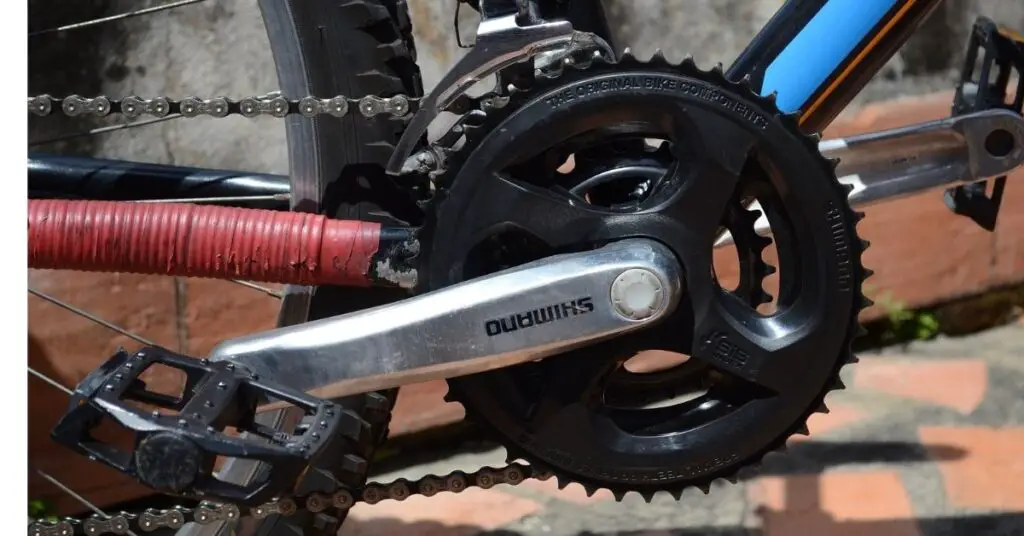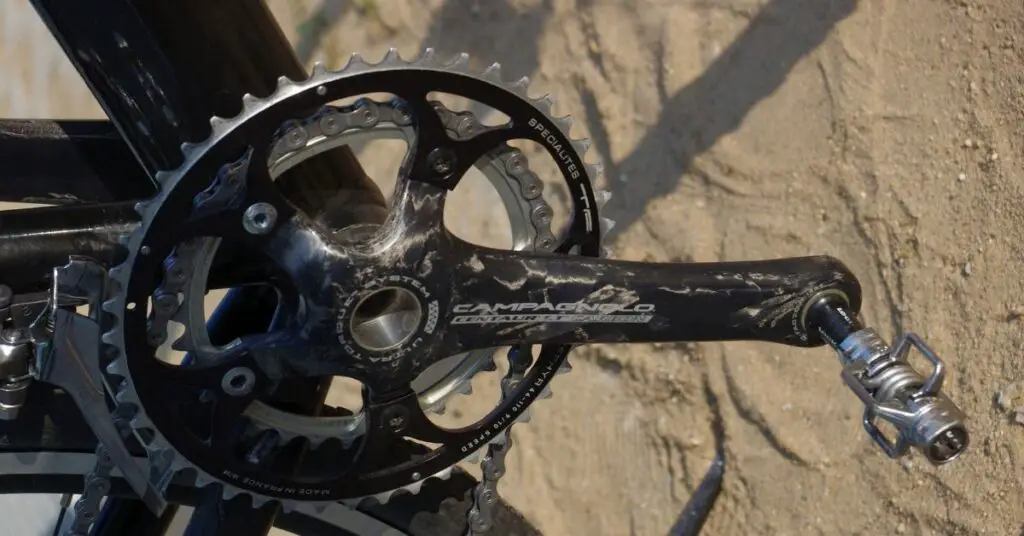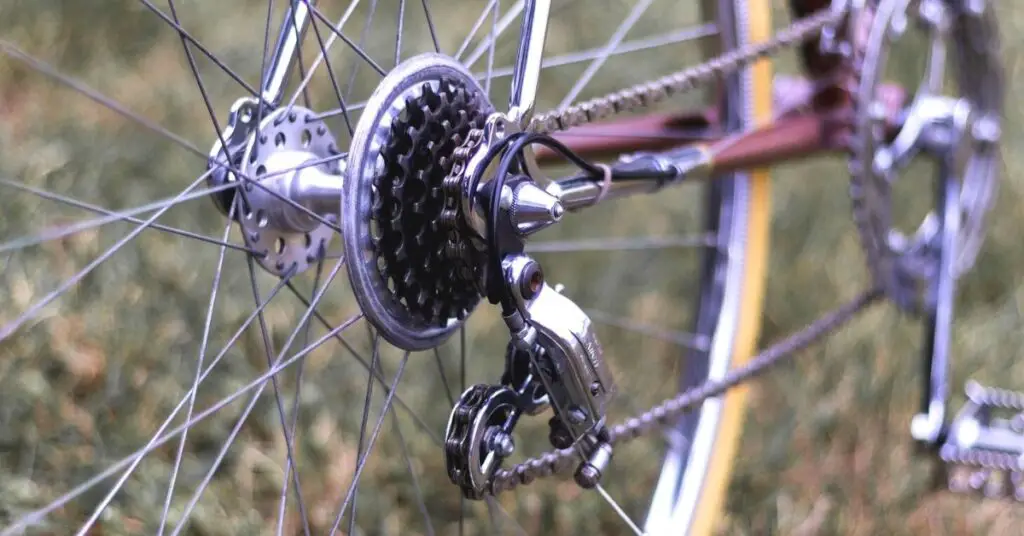Over time, bike riders always try to find a way to make riding an easy and pleasurable experience, not a struggle. That is why discussions about the effect of a bicycle’s crankset weight have always been a matter of interest to bike riders.
The crankset processes a majority of the energy needed to power a bike. Hence, the crank is expected to be durable, strong, light and, worth every penny for the bicycle- conditions that most modern manufacturers claim to possess all-in-one in their endless sea of products.
In this article we are specifically focusing upon the dilemma of many cyclists about the Crank Weight- Does it Matter?, Does it affect speed/heaviness?, Aluminum vs Carbon Fiber, Average Weight of Cranks, and Some Light Crank options.

Does Crank Weight Really Matter?
Riders usually tend to ditch their older crank models for newer upgrades which are mostly lighter.
The material used in the manufacturing process of bike cranks can have an effect on the overall weight of the bike. For instance, cranks made from iron, steel, and some other specific materials are less likely to be lightweight when compared to modern carbon fiber-made versions.
Essentially, a crank has to be light, durable, and affordable, however, bikers are usually left with choosing to let go of one of these at the end of the day due to some trade-off. For instance, a crankset that is both light and durable will be highly-priced while a crankset that is cheap and durable forgoes its light weight.
But the real bone of contention is how a lighter crank or heavier crank affects the functionality of the bicycle.
Does Crank Weight Affect Speed?
Although there is an ever-evolving debate on how much effect the weight of a crank has on the rider and his riding experience, it is also a widely known fact that bikes made with a heavy crankset have a low pick up rate and lower speed when ascending hilly terrains compared to the lighter cranks.
Causal Riding Vs. Racing Event
Naturally, heavy objects will require more energy to pick up and accelerate.
Although once the heavier cranks start rotating, it has the ability to maintain the speed for a long time because more force has been put into it compared to a bike with lightweight cranks.
However, this difference of force and speed, in reality, is just about an accumulated four to seven seconds, which is less likely to make a huge difference for riders when not in a competition.
The weight of a crankset has no significant effect on the bicycle’s speed.
Moreover, a heavier crankset will need more force to function. That basically means a heavier crank will need more work from the rider to pedal and rotate the cranks when compared to a lighter crank.
Does Crank Weight Affect Overall Bike Weight?
A bike’s weight is an important concern to many riders. A heavy crank also automatically means a heavier bicycle, while a lighter crank makes a lighter bike.
A slight change in a bicycle’s crank weight could be evident when the bike is being carried or measured.
Having a bicycle that has a lighter crankset, presumably made of carbon fiber, makes it easier for the rider to pedal on hilly terrains and makes the biker able to manoeuvre stiffly and easily.
Lightweight Carbon made cranks are usually found on the high end of the scale. Investing in one of these can give you a lighter bike ride if you are concerned with saving every ounce you can.
You should, however, keep in mind that beyond the weight of the cranks, what really matters is the durability and strength of the crank, be it carbon or aluminum.
Carbon Fiber vs Aluminum Cranksets
Generally, bike components like the cranks are usually made of titanium, aluminum alloy, Chromoly steel, or carbon fiber.
However, carbon fiber and aluminum are both modern manufacturing materials for bike components to give them better performance. Despite their similarities, these manufacturing materials have major differences.
1- Bike cranks made from carbon fiber are known for their lightweight while aluminum-made cranks are more likely to be rigid and heavier.
2- High-end crank manufacturers now make use of carbon fiber which they claim maintains flexibility while being as durable as aluminum. Aluminum-made cranks are generally heavier and more rigid than cranks made from carbon materials. These cranks tend to provide more durability and stiffness. This is popularly used by mountain bikers and downhill riders.
3- Carbon fiber cranks are more aesthetically appealing on bikes as they usually appear more sleek, eye-catching, and lightweight.
Since aluminum and carbon fiber cranks have only a few differences that affect their functionality, when making a choice between carbon fiber and aluminum-made cranks, it is essential to know what you need from the bike.
It is essential to note that both aluminum and carbon materials are very strong materials, that is why they are considered for manufacturing bike components like cranksets.
Weight of Some Different Cranskets
While different cranksets weigh differently, all depending on the rider’s preferences and choice, they can also be influenced by their unique production method and materials used. Here is a table that compares a few recommendable crankset models and their weight.
| Series | Model | Weight |
| Shimano | DURA-ACE 9000 | 639g |
| THM | Clavicula SE | 300g |
| 105 | 5800 | 798g |
| SRAM | GX Eagle DUB | 624g |
| Shimano | SLX M7100 | 631g |
| FSA | Afterburner CK Modular | 704g |
Some Light Crankset Options
Most modern cranks have developed into the use of lighter materials in making bike components. These materials result in components that are not as heavy as previous models.
A light crankset may look fragile but that is far from the truth. cranks made from carbon and aluminum are strategically made to be light and durable.
Lightweight cranks give a feeling of ease to the rider but this comes at a costly expense. There is an array of endless choices when it comes to selecting light cranksets.
Here is a list of recommendable lightweight cranks that can be found on amazon.
Race Face Next SL G4
This crankset is one of the lightest crank weight options at 441g, the crank is fully made of carbon fibre. It also has a wide range of ring options and power meter options while being super light.
SRAM XX1 Eagle DUB SL
This high end and lightweight crankset boasts a smooth enough and much stiff propulsion than its previous versions. It is made of full carbon fibre and maintains its durability.
Rotor Kapic
This aluminum alloy made crank is one of the lightest for its make. The crank has lots of ring positions and bearing options. However, it has a weakness of being flexible when peaking, for its 547g.
THM Carbones Clavicula SE
Early 2021, a German company, THM launched the world’s lightest crank weighing about 320g. this new crank is an upgrade to the previous model. It has cranks available between 170mm-175mm. this crank was made with carbon fibre and strain gauges to improve its functionality.
Shimano Dura-Ace FC-9000
The Shimano Dura-Ace FC-9000 is one of the most recommendable cranks in the component market. It comes at a high price, but it is a good deal for its worth.
The hollow design of the crank helps keep the crankset in moderate weight while its four-arm spider stays stiff even under pressure.
SRAM Red 22
The SRAM Red 22 crank is also one of the lightest models made by the company. It is manufactured using carbon fibre to give it its aesthetic look, durability and required stiffness.
Final Thoughts!
The weight of bike cranks has always been an issue of concern to many riders. However, when it comes to choosing cranks, the choice is always with you.
It has been concluded that while a bike with a lighter crank is easier to manoeuvre, the weight of a crank still has a very subtle difference in the bike’s overall functionality.
Moreover, it is important to note that a lighter crank means a more high-end expense and most times the foregoing of durability for a lighter weight. However, this article has provided you with choices of lightweight and high-end cranksets made with carbon fibre, yet offering durability and stiffness.
Cheers!




